Tehran Grand Bazaar: Iran's Shopping Wonderland
The Tehran Grand Bazaar, a bustling and vibrant marketplace located in the heart of Iran's capital city, is a testament to the rich tapestry of Iranian culture and history.
The Tehran Grand Bazaar is far more than just a place to buy and sell goods; it is a microcosm of Iranian society itself. With its origins dating back over a thousand years, this bazaar has played a pivotal role in shaping the cultural, economic, and social landscape of the country.
In this guide, we will explore deeper into the history, architecture, various sections, and the significance of the Tehran Grand Bazaar, offering you valuable insights for your visit.
Tehran Grand Bazaar Location
The Grand Bazaar, located in the heart of downtown Tehran, is bordered by Molavi Street to the south, Mostafa Khomeini Street to the east, Panzdah-e Khordad Street to the north, and Khayyam Street to the west.
How Old is the Grand Bazaar in Tehran?
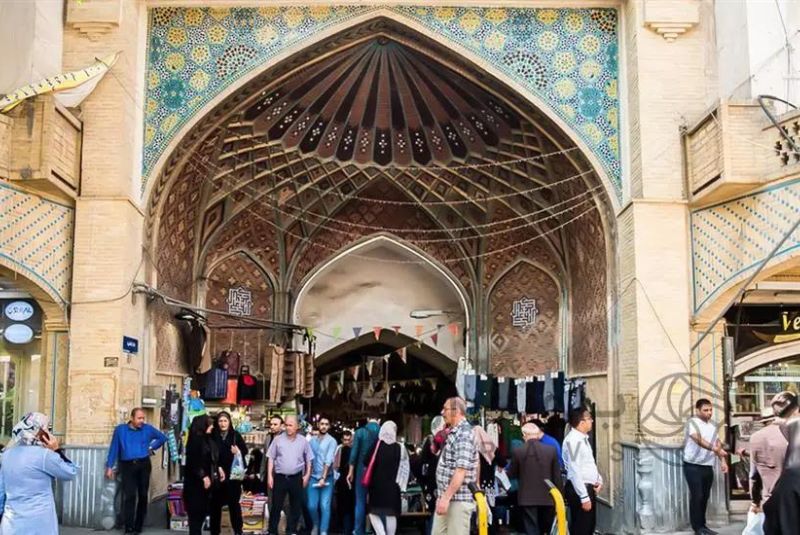
The roots of the Tehran Grand Bazaar history trace back over a millennium, making it one of the most ancient bazaars in the world. The early construction of the bazaar can be attributed to the early years of Tehran's existence as a city.
The Tehran Grand Bazaar is estimated to be around 400 to 500 years old. Its origins can be traced back to the late 16th century, during the Safavid dynasty's reign. While the exact date of its construction is not documented, historical records indicate that it was already a thriving marketplace by the 17th century.
The construction and expansion of the Tehran Grand Bazaar were gradual processes that spanned several decades and even centuries. As the city grew in importance and population, the bazaar evolved organically, with new sections and structures being added over time. This continuous expansion continued throughout the Qajar and Pahlavi periods, resulting in the vast and intricate bazaar we see today.
Tehran Grand Bazaar Architecture
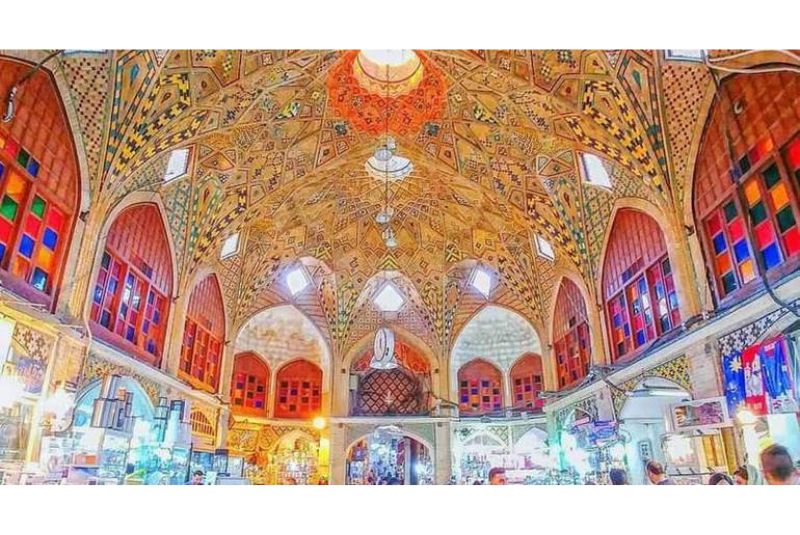
The Tehran Grand Bazaar is a splendid example of traditional Persian architecture. Its design reflects the architectural aesthetics of the Safavid and Qajar periods. The bazaar is a labyrinth of winding alleys, arched passageways, and intricately designed storefronts, all of which contribute to its unique and visually captivating architectural style.
How Big is the Grand Bazaar of Tehran?
The bazaar is vast, covering an extensive area in the heart of Tehran. Its dimensions are considerable, with an estimated area of over 10 hectares. It is not only one of the largest bazaars in Iran but also one of the most extensive traditional bazaars globally. It almost takes visitors 1 to 2 hours to wander inside.
Notable Architectural Features
The Tehran Grand Bazaar is a treasure trove of architectural details that reflect its historical and cultural significance:
- Arched Passageways: The bazaar is known for its elegant arched passageways that connect various sections, providing shade and shelter to shoppers and traders. These arches often display decorative tile work, adding to the bazaar's aesthetic charm.
- Courtyards: Within the bazaar, you will encounter several open courtyards that offer moments of respite and social gathering. These courtyards are often adorned with fountains, ornamental tiles, and lush greenery, providing an oasis of calm amidst the bustling marketplace.
- Domes: The bazaar's architecture features a variety of domes, both large and small. These domes are often embellished with intricate tile work, creating a sense of grandeur. Some of the domes also serve as landmarks within the bazaar, making navigation easier.
- Tile Work: The bazaar is renowned for its stunning tile work. The tiles, with their vibrant colors and intricate patterns, adorn many of the facades, arches, and ceilings, adding a sense of beauty and artistry to the architecture.
- Wooden Ceilings: Many sections of the bazaar are covered by traditional wooden ceilings, which not only provide protection from the elements but also showcase the craftsmanship of Iranian artisans.
Materials Used in Construction
The construction of the Tehran Grand Bazaar employed a combination of traditional and locally sourced materials. The architectural elements and structures were primarily built using bricks, clay, and wood. The extensive use of decorative tiles, featuring intricate patterns and calligraphy, is one of the hallmarks of the bazaar's construction. These tiles are often painted and glazed, adding color and vibrancy to the architectural details.
Shopping in Tehran Grand Bazaar

The Tehran Grand Bazaar is a bustling marketplace with a wide variety of stores and shops, and it's estimated to have more than 180 different types of stores. These stores encompass an array of traditional, cultural, and modern goods, making it a vibrant and diverse destination for visitors looking to explore Iranian culture and shop for unique products and souvenir. Here are some of the primary store sections commonly found within the Tehran Grand Bazaar:
- Traditional Goods: This section is a treasure trove of Persian craftsmanship, offering an array of traditional items such as handwoven Persian rugs, carpets, textiles, pottery, and exquisite handicrafts. It's a haven for those seeking authentic Iranian souvenirs.
- Carpets and Textiles: Renowned worldwide for its handwoven carpets, the bazaar's carpet and textile section features an extensive collection of Persian rugs, textiles, and fabrics. Visitors can admire and purchase these intricately designed pieces of art.
- Spices and Herbs: An aromatic section of the bazaar, it's dedicated to an impressive assortment of spices, herbs, dried fruits, and nuts. The fragrant stalls here evoke the rich culinary traditions of Iran.
- Jewelry: This section is adorned with sparkling showcases of traditional and modern Persian jewelry. You'll find a variety of exquisite gold, silver, and gemstone pieces that reflect Iran's rich jewelry-making heritage.
- Antiques and Handicrafts: Those with an interest in history will appreciate the section dedicated to antiques and handicrafts. It's a place to discover unique artifacts, ancient objects, and finely crafted traditional items.
- Modern Products: The bazaar also caters to contemporary needs, with sections dedicated to modern products such as clothing, electronics, household items, and more. It provides a balance between tradition and modernity.
Why Tehran Grand Bazaar is Important?
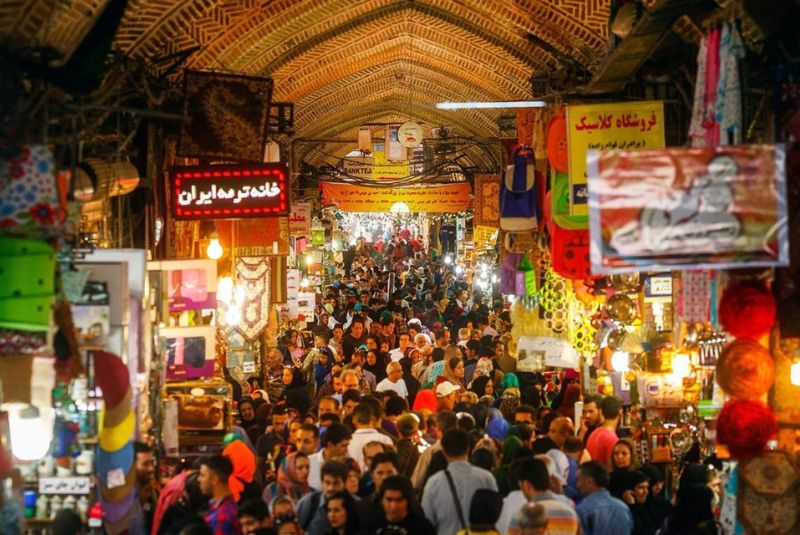
The Tehran Grand Bazaar is not just a marketplace; it is the economic heartbeat of Tehran and Iran as a whole. It serves as a vital center for trade, commerce, and economic activities. Thousands of merchants, artisans, and traders conduct business within its walls, contributing to the city's and the country's economy. It's a place where both traditional goods and contemporary products are bought and sold, making it a dynamic and essential component of Iran's economic landscape.
Tips for Visiting Tehran Grand Bazaar

- First of all, since the bazaar is very big, it will be difficult to find the shops and you may get lost, try to get help from a guided tour or a local guides.
- You can visit the grand bazaar of Tehran Saturday to Wednesday from 8:30 am to 5:00 pm, and Thursdays from 8:30 till 2:00 pm .The bazaar is closed on Fridays and holidays.
- The best time to visit Tehran grand bazaar is early in the morning when the bazaar is generally less crowded. This is an excellent time to explore the labyrinthine alleys and enjoy a peaceful shopping experience.
- Iran has a conservative dress code, and it's important to dress modestly when visiting the bazaar. Women should wear a headscarf, a long-sleeved top, and a knee-length skirt or trousers. Men should avoid wearing shorts and sleeveless shirts.
- Bargaining is a customary practice in the bazaar, especially when shopping for goods like carpets, textiles, or jewelry. It's expected, and sellers often quote higher initial prices.
- If you're visiting the mosques or religious landmarks within the bazaar, be respectful of the religious customs. Remove your shoes and be mindful of the prayer times.
- Always ask for permission before taking photos, especially of people, as some may prefer not to be photographed.
- While many people in the bazaar may speak English, learning a few basic Persian phrases can be a sign of respect and can help in your interactions.
Attractions Near Tehran Grand Bazaar
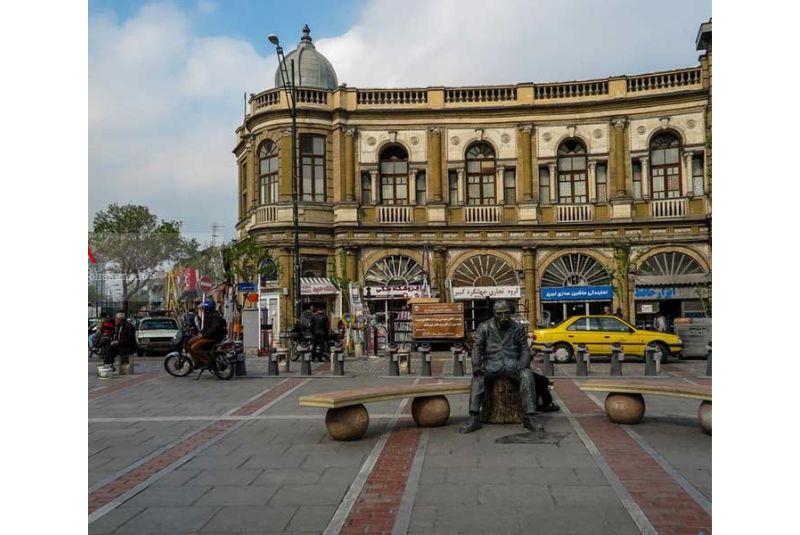
- Golestan Palace: Located within walking distance of the bazaar, the Golestan Palace is a UNESCO World Heritage Site that offers a glimpse into Iran's royal history. The palace complex features stunning architecture, beautiful gardens, and historic artifacts.
- Tehran Citadel (Arg-e Tehran): Explore the historic Tehran Citadel, a remnant of the ancient city's fortifications. The citadel houses a museum with exhibits on the city's history.
- National Museum of Iran: Just a short drive from the bazaar, this museum is a treasure trove of Iranian history and culture. Its collections include artifacts from prehistoric to Islamic periods.
- Tehran Museum of Contemporary Art: Known for its impressive collection of modern and contemporary art, this museum is a cultural gem. It houses works by both Iranian and international artists.
- Laleh Park: Located north of the bazaar, Laleh Park is a green oasis in the heart of Tehran. It's an ideal place for a leisurely stroll, picnics, or people-watching.
- Negarestan Garden: Negarestan Garden is a serene and picturesque garden located near Tehran University. It's a tranquil oasis within the bustling city, featuring lush greenery, fountains, and historic structures.
- Sardar-e Bagh-e Melli: Also known as the National Garden, it is a historic garden and public square near the Grand Bazaar. It has played a significant role in Iranian history and is a place where political and cultural gatherings often take place.
- Imam Khomeini Mosque: This grand mosque, located near the Grand Bazaar, is an architectural marvel and an important religious site. It's named after Ayatollah Khomeini, the founder of the Islamic Republic of Iran.
- Imam Hossein Square: This bustling square is adjacent to the Tehran Grand Bazaar and is home to several religious sites, including the Imam Hossein Mosque. It's a central gathering place for religious events and rituals.
Restaurants and Cafes Around
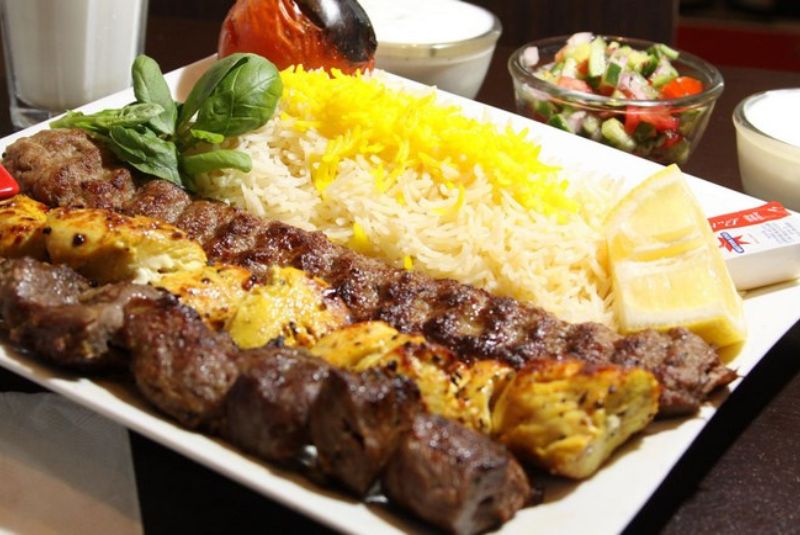
After exploring the bustling Tehran Grand Bazaar and its surrounding attractions, you'll likely want to savor the flavors of Iranian and international cuisine. Fortunately, Tehran offers a diverse dining scene where you can experience the rich and aromatic dishes of Persian cuisine or indulge in international options. Here are some restaurants and cafes to consider for a culinary journey in this vibrant city:
- Moslem Restaurant
- Reyhoon Restaurant
- Sharaf El Islam
- Haj Ali Darvish Teahouse
- Malek Cafe & Restaurant
- Vakil-O-Tojjar Restaurant
Recommended Dishes to Try
- Kebabs: Iran is renowned for its succulent kebabs. Try "Koobideh" (minced meat kebabs) and "Jujeh Kebab" (marinated chicken kebabs).
- Tahdig: Don't miss tasting "Tahdig," a crispy layer of rice that forms at the bottom of the pot. It's a sought-after delicacy in Persian cuisine.
- Ghormeh Sabzi: This herb and meat stew, typically made with lamb or beef, is a classic Persian dish.
- Fesenjan: A unique and flavorful stew made with pomegranate paste and ground walnuts, often served with chicken or duck.
- Barg and Soltani Kebabs: These kebabs feature marinated cuts of meat and are a must-try for lovers of grilled dishes.
- Saffron Ice Cream: End your meal with a scoop of saffron-infused ice cream, a favorite Persian dessert.
Where to Stay Near the Tehran Grand Bazaar
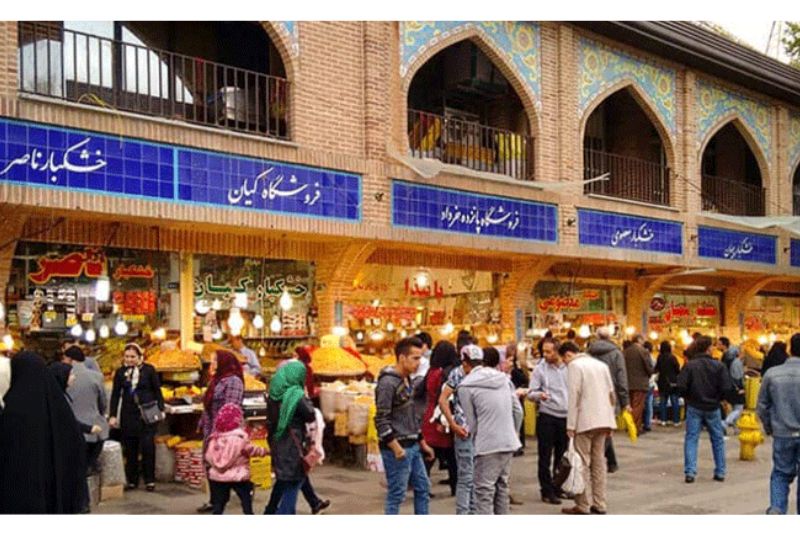
Tehran offers a range of hotels, guesthouses, and other lodging choices to suit different budgets and preferences:
- Ferdowsi International Grand Hotel
- Golestan Palace Hotel
- Khayyam Hotel
- Traditional Airan Hostel
- Amirkabir Hotel
- Ziba Hotel
- Samen Hotel
- Shiraz Hotel
Bottom Line
The Tehran Grand Bazaar is not just a place to buy and sell things; it's a place where Iranian history and culture come to life. It has seen many generations of people and many important events in history. The bazaar is full of life, and it's a must-visit if you want to understand Iran better.
We recommend that you explore the maze-like streets, check out the stalls selling traditional crafts, and try the delicious Persian food. The bazaar is like a whole different world where the past and the present blend together. You can experience Iran's living traditions there.
Share your story!
Comment below and let us know about your Experience.
Your story inspires others!


Comment
Leave a Comment